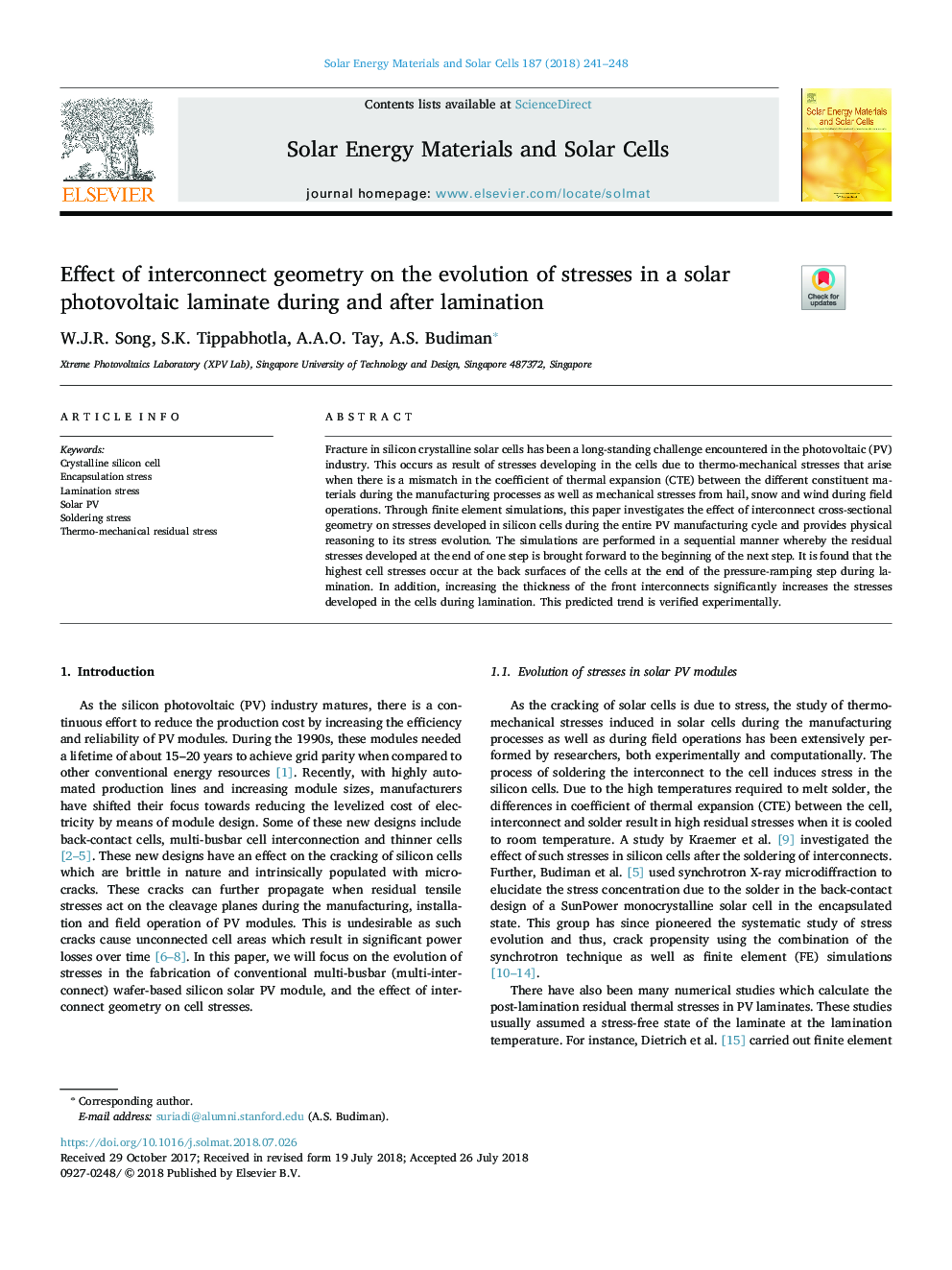| Article ID | Journal | Published Year | Pages | File Type |
|---|---|---|---|---|
| 10999987 | Solar Energy Materials and Solar Cells | 2018 | 8 Pages |
Abstract
Fracture in silicon crystalline solar cells has been a long-standing challenge encountered in the photovoltaic (PV) industry. This occurs as result of stresses developing in the cells due to thermo-mechanical stresses that arise when there is a mismatch in the coefficient of thermal expansion (CTE) between the different constituent materials during the manufacturing processes as well as mechanical stresses from hail, snow and wind during field operations. Through finite element simulations, this paper investigates the effect of interconnect cross-sectional geometry on stresses developed in silicon cells during the entire PV manufacturing cycle and provides physical reasoning to its stress evolution. The simulations are performed in a sequential manner whereby the residual stresses developed at the end of one step is brought forward to the beginning of the next step. It is found that the highest cell stresses occur at the back surfaces of the cells at the end of the pressure-ramping step during lamination. In addition, increasing the thickness of the front interconnects significantly increases the stresses developed in the cells during lamination. This predicted trend is verified experimentally.
Keywords
Related Topics
Physical Sciences and Engineering
Chemical Engineering
Catalysis
Authors
W.J.R. Song, S.K. Tippabhotla, A.A.O. Tay, A.S. Budiman,
